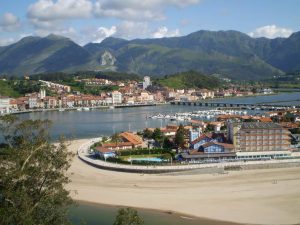Lugo, along with Oviedo, is one of the main monumental cities found in the Primitive Way of Santiago.
Índice de contenidos
PRIMITIVE ROAD – WORLD HERITAGE SITE
This Camino was declared a World Heritage Site in 2015. It was the first Camino de Santiago, traveled by pilgrims, promoted by King Alfonso XII the Chaste, who made it, in person, in the year 834 from Oviedo. Over the centuries up to the present day, many pilgrims carry out Organized trips to the Camino de Santiago following in the footsteps of King Alfonso on the Camino Primitivo, or that of many other pilgrims who walk the Camino in any of the variants that cross Spain.
Lugo, a monumental city, has its origin on a hill overlooking the river Miño and on which in the XNUMXth century BC the Romans built their Lucus Augusti (Sacred Forest), in the time of Emperor Augustus.
ROMAN WALL OF LUGO – ONLY COMPLETE WALL IN THE WORLD
Around the middle of the 2000rd century BC, the works of its impressive wall had to begin, as protection against the barbarian peoples, which surrounds the entire historic center of the city and is the only one in the world that is preserved in its entirety, for which it was declared By Unesco, in 1921, a World Heritage Site, previously it had also been declared a National Monument in XNUMX.

TOWERS AND DOORS OF THE WALL
Almost square in shape and granite in construction and with slate slabs it has a thickness that, in some parts of it, reaches 7 meters. It consists of 86 towers, of which 71 are original and has an approximate length of 2250 meters, through which you can walk, through a street (adarve or paseo de ronda), located at the top of the wall. Formerly, access to the upper part of the city was facilitated through stairs built and located inside the towers, although today it is accessed by means of 6 external stairs to the walls.
As an extension of the defensive measures, in addition to the wall, a camp area was built for the troops, for the garrisons, located between the tents or barracks and the wall, which was later removed to build houses and other buildings.
Initially, it had 5 access gates to the city (Puerta Falsa, Puerta de San Pedro, Puerta de Santiago, Porta Miña and Puerta Nueva), although later, to facilitate mobility and due to the expansion of the city, they were built 5 more doors, from the year 1853 (Puerta de San Fernando, Puerta de la Estación, Puerta del Obispo left, Puerta del Obispo Aguirre and Puerta del Obispo Odario)

MONUMENTS OF THE OLD TOWN OF LUCENSE CITY
CATHEDRAL OF SANTA MARÍA
Romanesque-Gothic building, started in the XNUMXth century and completed in the XNUMXth century. Inside is the patron saint of Lugo, the so-called “Virgen de los Ojos Grandes”, a beautiful image, of which the exact date of its construction is not known.
ROMAN TERMS
They date from the same time that the city was founded in Year XIII BC, since these waters were discovered and of which the Romans were so fond. Those that can currently be visited probably date from Year 2 (AC), although they are in disuse.
ROMAN BRIDGE
It dates back to the first half of the 104st century AD. It is XNUMX meters long and facilitates the passage through the river Miño.
We must not forget its famous festival of Burning Lucus, declared of National Tourist Interest, It is celebrated in Lugo in the middle of June that revives the Roman past of the walled city, and whose festive origin dates back to 2001 to commemorate the founding of the city. Festivities lasting 3 days where locals dressed in period clothing set up military camps, Roman circuses, craft markets, Celtic weddings and the famous “Burning of the Wall” in a simulated siege of a Roman city of the time. On the dates of Arde Lucus, occupancy is very high, even with reservations made a year before. If you want to do the Camino and see this famous festival at least once in your life, instead of starting to walk from Lugo, you we would recommend the Camino de Santiago from Sarria organized, Sarria is located half an hour away by car, so we can organize round trip transportation to see the “Siege of Lugo” live and direct.









